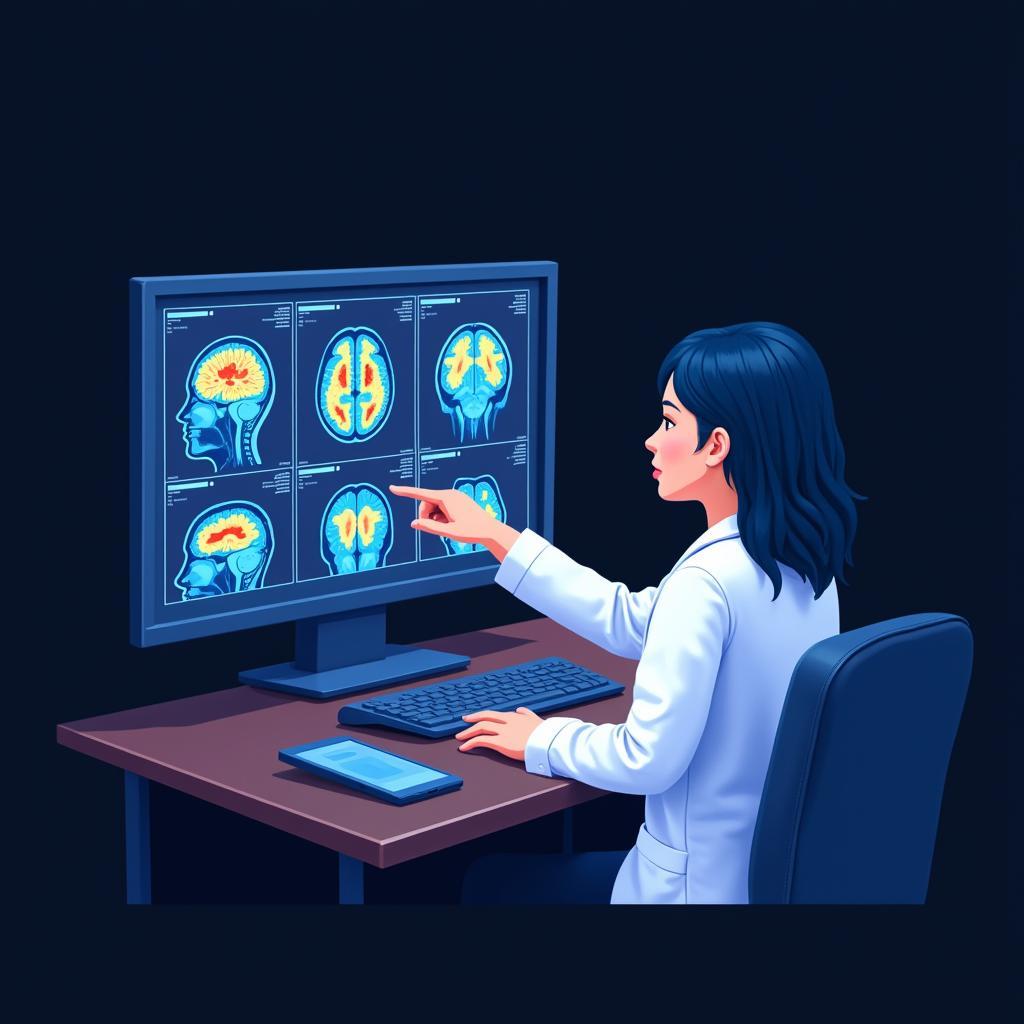Scan in neuroscience research is revolutionizing our understanding of the human brain. This article provides a brief overview of the different scanning techniques used in neuroscience research, their applications, and their limitations.
What are Brain Scans?
Brain scans are non-invasive methods that allow scientists to observe the structure and function of the brain. They have become indispensable tools in neuroscience research, providing valuable insights into various neurological and psychological processes. These scans help researchers understand how different brain regions interact, identify areas affected by disease, and even explore the neural basis of complex human behaviors.
Types of Brain Scans Used in Neuroscience Research
Several different types of brain scans are commonly used in neuroscience research, each with its strengths and weaknesses. Some of the most prominent ones include:
- fMRI (functional Magnetic Resonance Imaging): fMRI measures brain activity by detecting changes in blood flow. It provides excellent spatial resolution, allowing researchers to pinpoint active brain regions with remarkable precision.
- EEG (Electroencephalography): EEG uses electrodes placed on the scalp to measure electrical activity produced by the brain. It has excellent temporal resolution, capturing brain activity in real time, but its spatial resolution is limited.
- MEG (Magnetoencephalography): MEG measures magnetic fields generated by brain activity. Like EEG, it offers excellent temporal resolution but improved spatial resolution compared to EEG.
- PET (Positron Emission Tomography): PET uses radioactive tracers to measure metabolic activity in the brain. It can provide information about specific neurotransmitter systems, but it involves exposure to radiation.
- DTI (Diffusion Tensor Imaging): DTI tracks the movement of water molecules in the brain to map white matter tracts, the connections between different brain regions.
How are Brain Scans Interpreted?
Interpreting brain scans requires specialized training and expertise. Scientists use sophisticated software to analyze the complex data generated by these scans. The interpretation often involves comparing brain activity during different tasks or between different groups of participants, such as patients with a particular neurological condition and healthy controls.
Applications of Brain Scans
Brain scans have a wide range of applications in neuroscience research, including:
- Studying Cognitive Processes: Researchers use brain scans to investigate how the brain performs various cognitive functions, such as memory, attention, and language.
- Diagnosing Neurological Disorders: Brain scans can help diagnose conditions like Alzheimer’s disease, Parkinson’s disease, and stroke.
- Monitoring Treatment Effectiveness: Brain scans can be used to track the progress of patients undergoing treatment for neurological or psychiatric disorders.
- Developing New Treatments: Brain scans play a crucial role in developing new drugs and therapies for brain-related conditions.
 Analyzing Brain Scan Data in Neuroscience Research
Analyzing Brain Scan Data in Neuroscience Research
What are the Limitations of Brain Scans?
While brain scans are powerful tools, they also have limitations:
- Cost: Some brain scanning techniques, such as fMRI and MEG, are expensive, which can limit their accessibility.
- Invasiveness (PET): PET scans involve exposure to radiation, which, although minimal, is a consideration.
- Interpretation Challenges: Interpreting brain scan data can be complex and requires careful consideration of various factors.
The Future of Scan in Neuroscience Research
The field of brain scanning is constantly evolving. New techniques and technologies are being developed that promise to provide even more detailed and precise information about the brain. These advancements are expected to further revolutionize our understanding of the brain and lead to new treatments for neurological and psychiatric disorders.
Conclusion
Scan in neuroscience research is an essential tool that is continually evolving, opening new avenues for understanding the complex workings of the human brain. From fMRI and EEG to PET and MEG, these technologies provide valuable insights into both the structure and function of the brain, helping researchers unravel the mysteries of the mind and develop treatments for neurological and psychological disorders. As technology advances, the future of brain scanning promises to be even more exciting and insightful.
FAQs
-
What is the most common type of brain scan used in research? fMRI is currently the most widely used brain scanning technique in neuroscience research.
-
Are brain scans safe? Most brain scans, like fMRI and EEG, are non-invasive and safe. PET scans involve a small amount of radiation.
-
How long does a brain scan take? The duration of a brain scan varies depending on the type of scan.
-
Can brain scans read minds? No, brain scans cannot read minds. They measure brain activity, not thoughts.
-
How accurate are brain scans? Brain scans are generally accurate, but the interpretation of the data requires expertise.
-
Where can I volunteer for brain research near me? If you’re interested in participating in brain research, you can check out resources like volunteer for brain research near me.
Scenarios for Common Questions
-
How do researchers use brain scans to study memory? Researchers might use fMRI to observe brain activity while participants perform memory tasks.
-
How can brain scans help diagnose Alzheimer’s disease? Brain scans can reveal structural changes in the brain associated with Alzheimer’s, such as shrinkage of certain brain regions.
Further Exploration
For further information, check out other articles on our website related to specific brain scanning techniques and their applications in neuroscience research.
Need Help?
For any assistance or inquiries, please contact us:
Phone: 0904826292
Email: research@gmail.com
Address: No. 31, Alley 142/7, P. Phú Viên, Bồ Đề, Long Biên, Hà Nội, Việt Nam. Our customer service team is available 24/7.